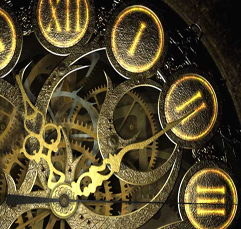

The shortest period of daylight occurs in winter, from about 6 am to 4 pm in the Northeast, whereas the western part of the country enjoys daylight typically between 7 am and 6 pm. Hence, work is done with the greatest efficiency during daylight hours. Only some time after melatonin secretion stops is the body at its highest level of mental and physical alertness. The body secretes a hormone, melatonin, a few hours after dark, getting the body ready for sleep and continues secretion until about just after sunrise. One is that people’s productivity and efficiency follows a biological clock that is synchronised with the daily light-dark cycles, with daylight hours best suited for working and the night for resting. There are several reasons why researchers, as distinct from governments, ask for two timezones. Proposed map of India showing two timezones. They propose a demarcation passing through 89★2’ E, at the border between West Bengal and Assam – the ‘narrowest’ part of the country, sandwiched between Nepal on the west and Bangladesh on the east. In a new study, they argue for two timezones in India. Now, researchers at the CSIR-NPL have reopened this argument. A high-level committee constituted by the Department of Science and Technology had looked into this earlier and recommended that a single timezone be maintained, and the court based its decision on this recommendation.

Last year, the Gauhati high court dismissed a public interest litigation seeking direction from the Centre to notify a separate timezone for the Northeast. However, in 1905, the British adopted a single timezone for India using the 82.5° meridian.īut the issue of two timezones kept cropping up.

In 1884, when timezones across the world were being established, it was decided that India would have two times: Bombay time, 4 hours 51 minutes ahead of GMT, and Calcutta time, 5 hours 30 minutes ahead of GMT. The idea of two timezones for India – spanning from about 68° E to 97° E, equivalent to two timezones in the east-west direction – is not new. This time has an accuracy of 20 nanoseconds and is traceable to the UTC provided by the International Bureau of Weights and Measures in Sèvres, France.Īlso read: From Sundials to Atomic Clocks, a Journey Through the Way Humans Have Kept Time The keeper of the time in India is the CSIR-National Physical Laboratory (NPL), New Delhi, which records time using five caesium atomic clocks. In India, the IST is based on longitude 82.5°, which passes through Mirzapur, near Allahabad in Uttar Pradesh, and is 5 hours 30 minutes ahead of Greenwich Mean Time (GMT), now called the Universal Coordinated Time (UTC). The zones are determined by the governments after accounting for their geography, and the official time of a country is maintained by the respective governing authorities. However, although the timezones are demarcated by the longitudes, each timezone is not always a straight line cutting through a country. As a result, the world is divided into 24 timezones shifted by one hour each. As Earth turns by 15° around its axis, time changes by one hour a 360º-degree rotation yields 24 hours. This is why the northeastern states have for a long time been demanding that they have a timezone distinct from the Indian Standard Time (IST), so they can take advantage of the early daylight hours.Ĭountries across the world keep different times because of Earth’s rotation and revolution around the Sun. On the other hand, if you travel further east to the eastern edge of Assam, light dawns as early as 4:30 am in summer and it gets dark by around 4 pm in winter. If you have ever travelled from Kolkata to Mumbai, you have likely noticed that daylight arrives later in the morning in Mumbai than in Kolkata, and sunlight lasts later into the evening.


 0 kommentar(er)
0 kommentar(er)
